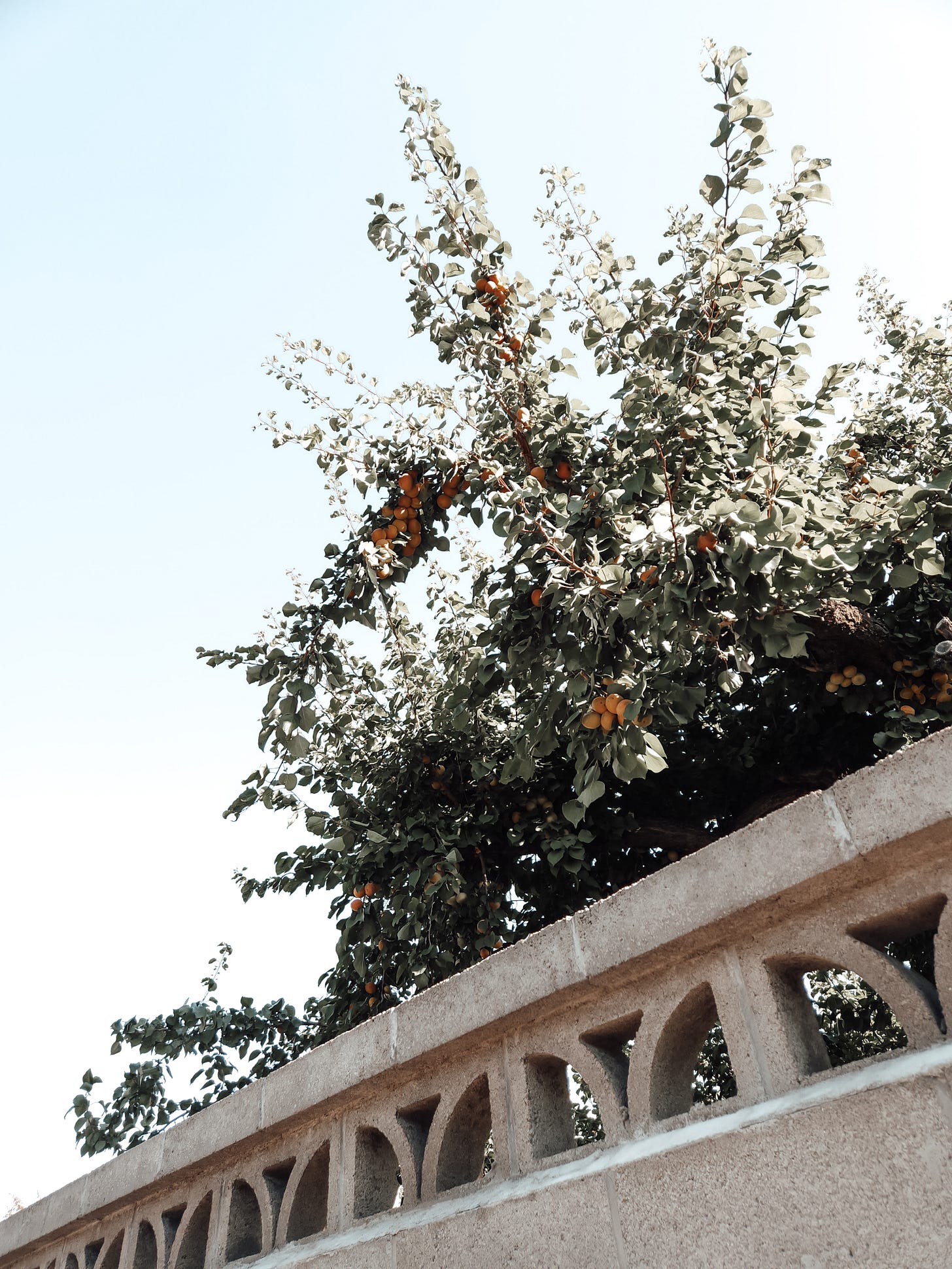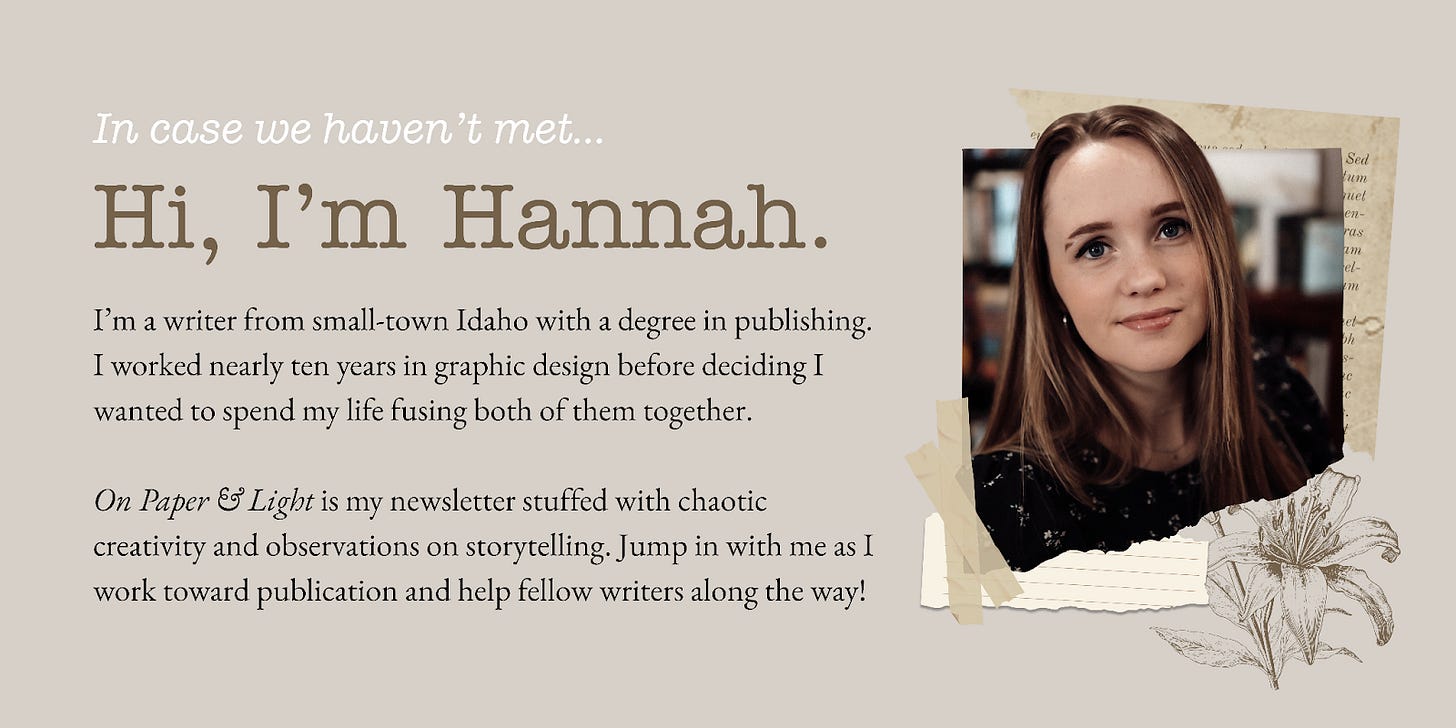Creativity is the last great stand against the automated villain
Where so much of our day is governed by habit, original creative work sets human intelligence apart.
They say creatives are at risk of being replaced by artificial minds who can write, draw, and produce faster than us. I think the discussion should be going a lot further.
This week, I’m back on the subject of artificial intelligence. Following hot on the heels of a week learning about billionaire bunkers in New Zealand, the increasing desensitization of people to world disasters, and a podcast episode on what some consider ‘the beginning of the end,’ I’m still here trying to orient myself as a singular, minuscule creative on a planet that seems on the brink of self-destruction.
Welcome back to On Paper & Light.
AI’s increasing utilization prompts more than just a question of ethics—it questions creativity, and whether we can preserve our own humanity alongside it.
I used to joke about my cosmic insignificance with an unserious analogy, describing it as feeling equivalent to ‘a spit wad in the ocean.’ But I’m young enough that I haven’t experienced a broken world firsthand, so in my mind the world’s balance only moves fractionally. Our foundational bedrock has always seemed immovable, for the most part, as if there was only so big a mess we could make.
But that perspective has began to change. With the conscious effort to challenge my worldviews now more than ever, and with every book, movie, research article, or podcast I seek out in an attempt to pursue more learning, I’m collecting new critical questions that lack concise answers. The latest among these questions:
If AI has the capacity to write stories, generate art and designs, automate my calendar, conduct my research, schedule my content, reply to my social messages, summarize my notes . . . what is left?
What, after all that is removed, is still human? Is it anything more than veins and bones juxtaposed against wires and codes?

So much of the way we live is already automated. Our life experiences are largely driven by our habits and subconscious behavior patterns. Details as small as when we get up in the morning, to what snack we reach for first, to the way we go about packing our bag, to how we tie our shoes . . .
Even the way we write each letter of the alphabet.
(I write my S’s upside-down. Always have.)
Other than a few little quirks we picked up along the way and the lack of actual mechanical parts, the argument could be made that we are often operating quite similarly to an LLM. Here’s the Wikipedia definition, in case that’s a term you aren’t familiar with:
A large language model (LLM) is a language model trained with self-supervised machine learning on a vast amount of text, designed for natural language processing tasks, especially language generation.1
And if you’ve never looked up what the ‘GPT’ part of ChatGPT stands for, it means Generative Pre-trained Transformers.
While studying semantics, sociolinguistics, and dialects back in college, I took a course that discussed how we run on ‘scripts’ to help us function in our day-to-day lives, minimize the need for critical thinking, and prevent brain overload.
When you go to a restaurant, for example, you behave based on an internal script. It probably looks something like this:
Ask the hostess for a table, and wait to be seated.
Take your seat. You probably have a preferred spot—inside, middle, outside.
Order your drink while you decide what you’d like to eat.
Tell the waiter your food order.
Chat with company while receiving your drink and appetizers.
Receive and eat your main course.
Conclude your conversation, and ask for the bill.
Pay the bill. Tip the waiter if they made your experience positive.
You learned this script from previous experiences at previous restaurants. That’s your ‘data.’
Obviously, not all restaurants operate the same—some allow you to seat yourself, order remotely, get takeout, or pay at the counter after the meal. And your company won’t always be the same if you go out to eat with a date, as a family, or by yourself. We adapt our behavior accordingly.
If our scripts and behaviors are trained on collected data, and we use this data to execute daily interactions without critical thinking, are we not most often behaving just like these artificial chatbots? That’s the question that really stumped me.
How do I, as a creative, stand apart from a technology that seems to do everything faster and cheaper than me?
None of us yet know the full potential of artificial intelligence; we’re living in the middle of an unprecedented technological revolution, and the advancements are only picking up speed. However, I don’t think artists, writers, and creatives are going to be nullified just yet, and here is why.
We are capable of generating our own unique data, or in other words, we maintain our creativity and curiosity.
Artificial intelligence requires a prompt to create. Then it gathers, culls, and replicates what already exists within its database.
But emotion belongs to people, and the interpretation of it is best done through an artistic eye.
“To be creative means to be in love with life. You can be creative only if you love life enough that you want to enhance its beauty, you want to bring a little more music to it, a little more poetry to it, a little more dance to it.”
—Osho
While I drive to lunch with my grandfather, my eyes analytically focused on the road ahead as I navigate traffic lights, lane changes, and parking lots, it is his old painter’s eyes that wander past the rooftops of downtown Salt Lake to point out how gorgeous the clouds look today, the warmth they capture from a sun we cannot see.
That is a language no machine can mimic, because machines cannot know wonder, or awe, they cannot know color as we do. They cannot know that feeling of finality after hours, days, years spent mastering one’s craft.
And when it comes to subconscious scripts, it is creativity that invites people to operate outside them. We find an unspoken meaning in life and translate it for the world, ever building our “database.”
We write our S’s upside down, and we exist as a ‘spit wad in the ocean’ with a unique DNA coding that belongs to us alone.
That is something for which there can be no true substitute.
I’m on Week 14 of 30 in my goal to finish writing a book before my birthday.
Last week was a little rocky. My motivation for writing ebbs and flows like the tides; some weeks I am chomping at the bit to type away on my keyboard, and can’t wait to get an amazing scene drafted. Other weeks, like last week, I can’t seem to push past the intimidation of an essential chapter and don’t want to expend the brain energy to make it happen.
I didn’t realize how quietly my high expectations had slipped in while trying to face the penultimate chapter to my midpoint, but on Saturday (just hours before the week concluded), I finally managed to sit down. Dismissing my fear, I committed to writing at least one paragraph. Then I found my rhythm, and ended the week hitting over 4,000+ new words. Victory!
My manuscript now sits at 44,921 words and I’m positioned to write the midpoint scene this week. It’s going to be an interesting one. I’ve overwritten on the scenes leading up to it and had planned one more chapter to occur before the midpoint, but the pacing is appropriate to write it now. It feels like the right place. (And since this is a first draft, I can always change my mind!)
We’re moving this month, but I’m still on track to finish the book by end of October. Hoping to hit 52,000 by August 1st! Midpoint, here we come.
I have far too many interests, hobbies, and passions. They can be difficult to balance and impossible to rein in, at times. Last week’s passion project was filming a new video for my YouTube channel. I’m always conflicted about video content, because I hate making the short-form stuff that performs so well on socials. I much prefer the creative storytelling that longer videos allow me. Each video also demands more time, effort, and resources, though, which are elements that limit me at the moment. I’m excited to share this one and hope you’ll like it, too! If all goes according to plan, it’ll be premiering this upcoming Saturday. If you don’t see anything . . . then all did not go according to plan (haha).
Quick reminder about my novel planning workbook, The Writer’s Outline, which is a versatile resource for beginner writers who are overwhelmed by the idea of navigating a book project. I spent several months developing it, and it’s available now! Learn more about it and grab your copy here:
A quick, curated list of things I've been enjoying.
Fiction Reads: Vengeance by V.E. Schwab, the second half of her Villains duology. I absolutely devoured the first book, Vicious, in less than 24 hours. The duology is a research read for Project V and Vicious will likely be one of my comp titles!
Nonfiction Reads: The Anxious Generation by Jonathan Haidt and 101 Essays that will Change the Way You Think by Brianna Wiest. (I listen to these a chapter at a time over the course of several months to absorb the ideas as much as possible)
Listening: The Diary of a CEO Podcast, the entire soundtrack to K-Pop Demon Hunters, and a new podcast from Victoria Aveyard called Plot Twist! I’m loving it!
Exploring: This week is all about being flexible as someone who appreciates predictable structure. We’re packing the house up to prepare for a small move (nothing major) and nothing is happening consistently. I’m stealing tiny pockets of time for exercise and writing, and as always, I’m thanking my God for this beautifully chaotic and happy life of mine!
Let's connect!
I love hearing from you all! What resonated with you in this week's post? Do you have any burning questions about reading, writing, design, artificial intelligence, or other topics? Leave a comment below and let's chat!
Thanks for reading these words On Paper & Light this week. Your support means the world to me. I’ll see you in the next one.
(Psst… If you enjoy the newsletter, consider sharing it with a creative friend who might also love stories, writing, or graphic design!)
"Large language model," Wikipedia, The Free Encyclopedia, https://en.wikipedia.org/w/index.php?title=Large_language_model&oldid=1300146168 (accessed July 15, 2025).








